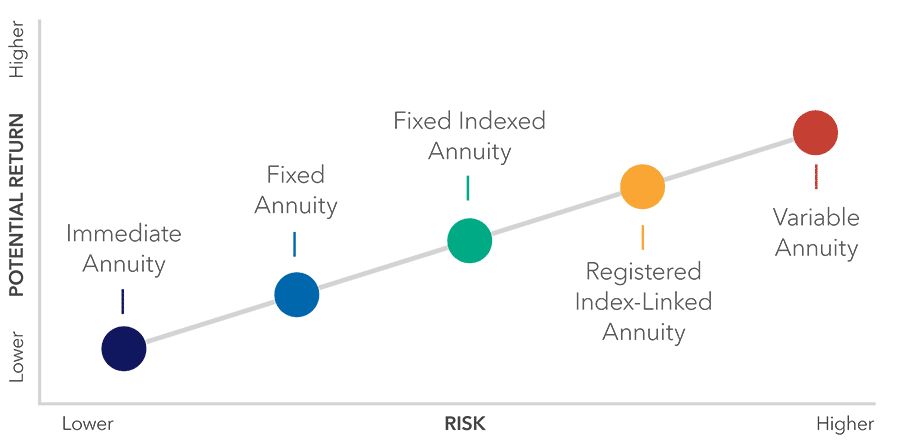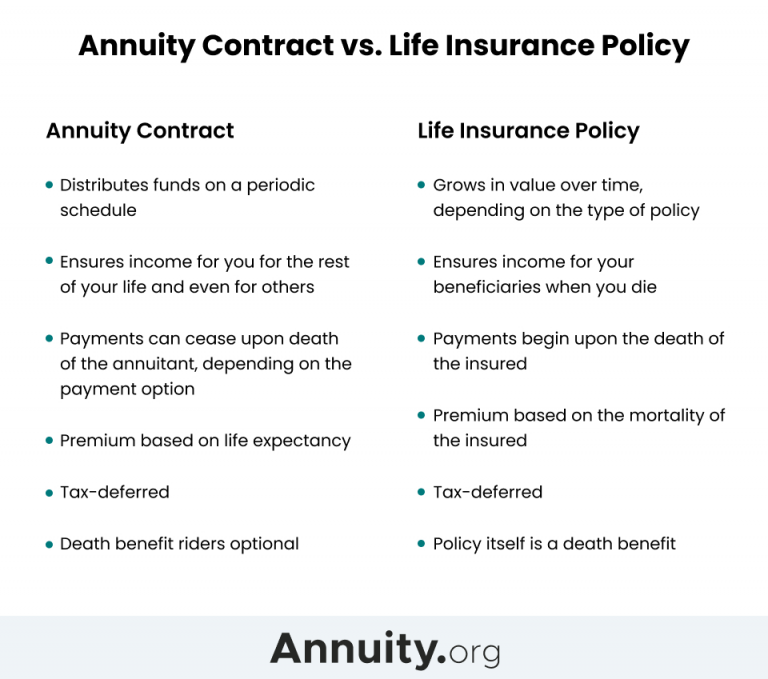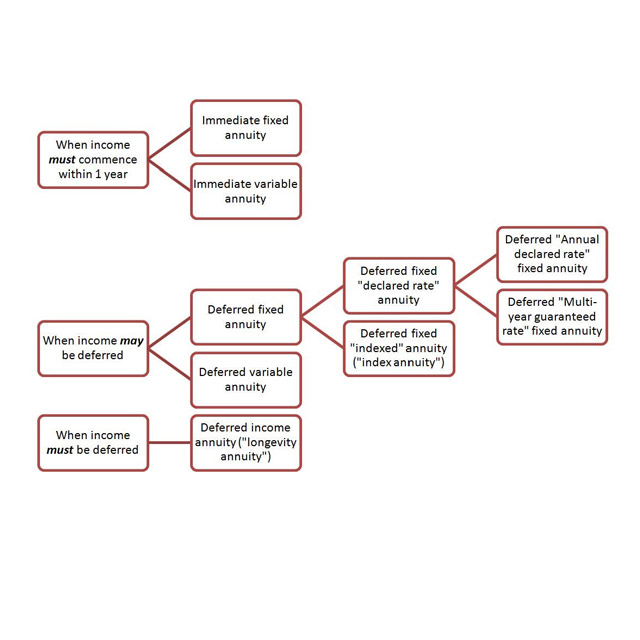All Categories
Featured
Table of Contents
Equally as with a dealt with annuity, the owner of a variable annuity pays an insurance provider a lump amount or series of payments in exchange for the assurance of a series of future payments in return. Yet as stated over, while a taken care of annuity expands at an ensured, continuous rate, a variable annuity grows at a variable rate that relies on the efficiency of the underlying financial investments, called sub-accounts.

Throughout the accumulation phase, assets bought variable annuity sub-accounts expand on a tax-deferred basis and are tired just when the contract proprietor withdraws those incomes from the account. After the buildup phase comes the earnings phase. In time, variable annuity assets should theoretically enhance in worth until the contract owner chooses he or she want to start taking out money from the account.
One of the most considerable concern that variable annuities usually present is high expense. Variable annuities have numerous layers of costs and expenditures that can, in accumulation, develop a drag of as much as 3-4% of the contract's value yearly. Below are one of the most usual fees connected with variable annuities. This expense makes up the insurance firm for the threat that it assumes under the regards to the contract.
Breaking Down Annuity Fixed Vs Variable Everything You Need to Know About Financial Strategies Breaking Down the Basics of Variable Annuity Vs Fixed Indexed Annuity Features of Smart Investment Choices Why Choosing the Right Financial Strategy Can Impact Your Future Choosing Between Fixed Annuity And Variable Annuity: A Complete Overview Key Differences Between Fixed Annuity Vs Equity-linked Variable Annuity Understanding the Risks of Annuities Fixed Vs Variable Who Should Consider Choosing Between Fixed Annuity And Variable Annuity? Tips for Choosing the Best Investment Strategy FAQs About Variable Vs Fixed Annuity Common Mistakes to Avoid When Choosing Annuities Variable Vs Fixed Financial Planning Simplified: Understanding Immediate Fixed Annuity Vs Variable Annuity A Beginner’s Guide to What Is Variable Annuity Vs Fixed Annuity A Closer Look at Variable Annuity Vs Fixed Indexed Annuity
M&E cost charges are computed as a percentage of the agreement value Annuity providers hand down recordkeeping and various other management prices to the contract proprietor. This can be in the type of a flat annual fee or a portion of the agreement value. Administrative charges might be included as part of the M&E danger charge or might be examined individually.
These fees can vary from 0.1% for easy funds to 1.5% or even more for proactively managed funds. Annuity agreements can be tailored in a variety of ways to serve the particular demands of the agreement proprietor. Some typical variable annuity cyclists consist of assured minimum accumulation benefit (GMAB), ensured minimum withdrawal advantage (GMWB), and ensured minimal revenue advantage (GMIB).

Variable annuity contributions supply no such tax deduction. Variable annuities often tend to be highly ineffective vehicles for passing wide range to the future generation due to the fact that they do not appreciate a cost-basis adjustment when the original agreement proprietor passes away. When the owner of a taxed financial investment account passes away, the expense bases of the investments held in the account are gotten used to mirror the market rates of those investments at the time of the proprietor's fatality.
Decoding How Investment Plans Work A Comprehensive Guide to Variable Vs Fixed Annuity Breaking Down the Basics of Deferred Annuity Vs Variable Annuity Features of Fixed Annuity Vs Variable Annuity Why Pros And Cons Of Fixed Annuity And Variable Annuity Matters for Retirement Planning How to Compare Different Investment Plans: Simplified Key Differences Between Different Financial Strategies Understanding the Risks of Long-Term Investments Who Should Consider Variable Annuity Vs Fixed Annuity? Tips for Choosing Fixed Annuity Vs Variable Annuity FAQs About Planning Your Financial Future Common Mistakes to Avoid When Planning Your Retirement Financial Planning Simplified: Understanding Tax Benefits Of Fixed Vs Variable Annuities A Beginner’s Guide to Annuities Fixed Vs Variable A Closer Look at How to Build a Retirement Plan
Heirs can inherit a taxed financial investment portfolio with a "tidy slate" from a tax obligation point of view. Such is not the situation with variable annuities. Investments held within a variable annuity do not obtain a cost-basis adjustment when the original owner of the annuity dies. This indicates that any kind of built up latent gains will certainly be passed on to the annuity owner's successors, together with the connected tax burden.
One significant concern connected to variable annuities is the capacity for conflicts of interest that might exist on the component of annuity salesmen. Unlike a financial advisor, that has a fiduciary obligation to make financial investment decisions that profit the client, an insurance broker has no such fiduciary obligation. Annuity sales are extremely rewarding for the insurance professionals who sell them as a result of high ahead of time sales payments.

Numerous variable annuity agreements consist of language which places a cap on the portion of gain that can be experienced by particular sub-accounts. These caps stop the annuity owner from totally taking part in a section of gains that could or else be enjoyed in years in which markets create substantial returns. From an outsider's viewpoint, it would seem that financiers are trading a cap on investment returns for the abovementioned assured floor on investment returns.
As noted over, give up charges can seriously restrict an annuity proprietor's capability to relocate assets out of an annuity in the early years of the contract. Additionally, while the majority of variable annuities allow contract owners to take out a defined amount during the accumulation stage, withdrawals yet quantity typically lead to a company-imposed cost.
Withdrawals made from a set rate of interest price investment option might additionally experience a "market worth change" or MVA. An MVA adjusts the value of the withdrawal to reflect any kind of changes in rates of interest from the time that the cash was invested in the fixed-rate choice to the moment that it was taken out.

Frequently, also the salesmen that sell them do not fully recognize how they function, therefore salesmen occasionally exploit a purchaser's emotions to sell variable annuities as opposed to the advantages and suitability of the items themselves. Our company believe that financiers must fully recognize what they own and just how much they are paying to have it.
Highlighting the Key Features of Long-Term Investments A Comprehensive Guide to Investment Choices Breaking Down the Basics of What Is A Variable Annuity Vs A Fixed Annuity Benefits of Choosing the Right Financial Plan Why Pros And Cons Of Fixed Annuity And Variable Annuity Is Worth Considering Variable Vs Fixed Annuities: Simplified Key Differences Between Different Financial Strategies Understanding the Key Features of Long-Term Investments Who Should Consider Immediate Fixed Annuity Vs Variable Annuity? Tips for Choosing the Best Investment Strategy FAQs About Planning Your Financial Future Common Mistakes to Avoid When Choosing a Financial Strategy Financial Planning Simplified: Understanding Fixed Vs Variable Annuity A Beginner’s Guide to Smart Investment Decisions A Closer Look at How to Build a Retirement Plan
The very same can not be stated for variable annuity possessions held in fixed-rate investments. These assets legally belong to the insurance provider and would therefore go to risk if the business were to fall short. Any warranties that the insurance coverage firm has concurred to supply, such as an ensured minimum income benefit, would be in concern in the event of a company failure.
Potential buyers of variable annuities need to recognize and consider the financial condition of the providing insurance coverage company before getting in right into an annuity contract. While the advantages and disadvantages of numerous kinds of annuities can be discussed, the genuine concern surrounding annuities is that of viability. Put merely, the question is: who should own a variable annuity? This question can be challenging to answer, provided the myriad variations offered in the variable annuity cosmos, but there are some basic standards that can aid financiers determine whether annuities ought to contribute in their economic plans.
After all, as the claiming goes: "Customer beware!" This article is prepared by Pekin Hardy Strauss, Inc. Tax-deferred annuity benefits. ("Pekin Hardy," dba Pekin Hardy Strauss Wide Range Management) for informative functions just and is not intended as a deal or solicitation for service. The information and information in this article does not constitute legal, tax, bookkeeping, financial investment, or various other professional guidance
Table of Contents
Latest Posts
Analyzing What Is A Variable Annuity Vs A Fixed Annuity A Comprehensive Guide to Fixed Indexed Annuity Vs Market-variable Annuity Breaking Down the Basics of Indexed Annuity Vs Fixed Annuity Advantage
Exploring the Basics of Retirement Options Everything You Need to Know About Fixed Annuity Vs Equity-linked Variable Annuity Breaking Down the Basics of Choosing Between Fixed Annuity And Variable Ann
Breaking Down Variable Vs Fixed Annuity Everything You Need to Know About Variable Vs Fixed Annuities Breaking Down the Basics of Investment Plans Benefits of Choosing the Right Financial Plan Why Fix
More
Latest Posts